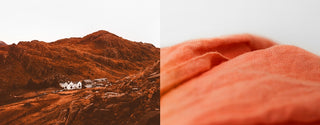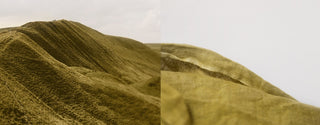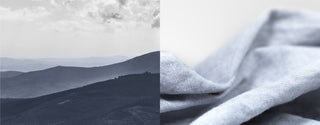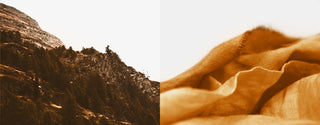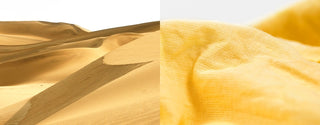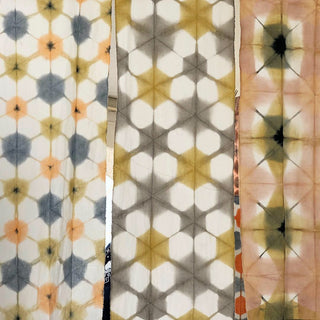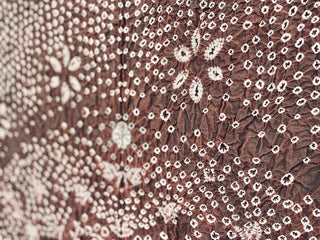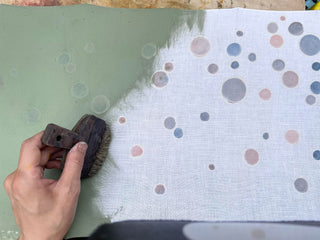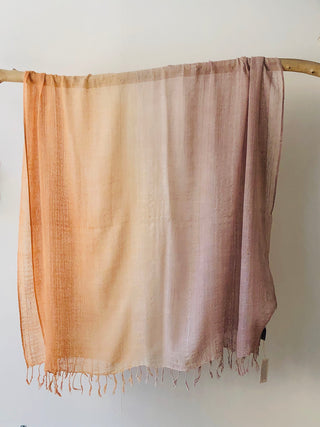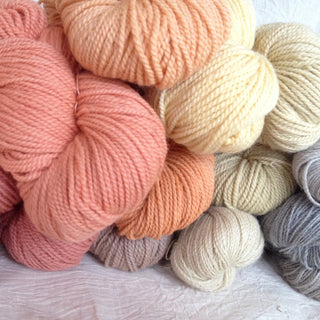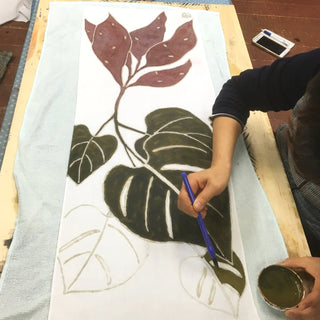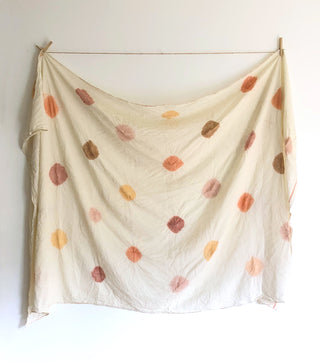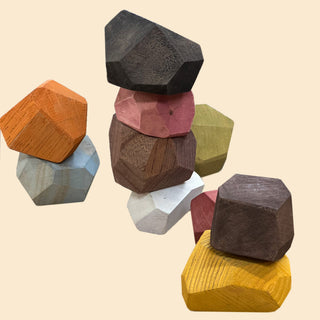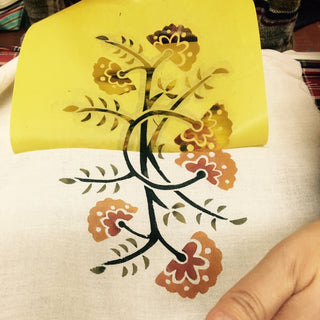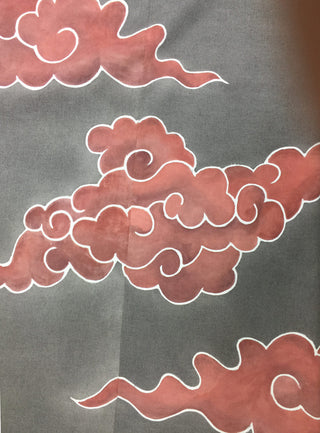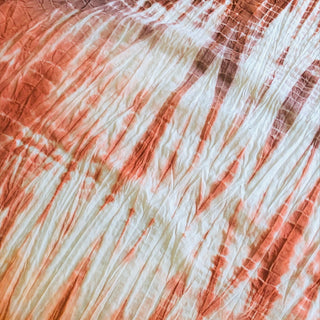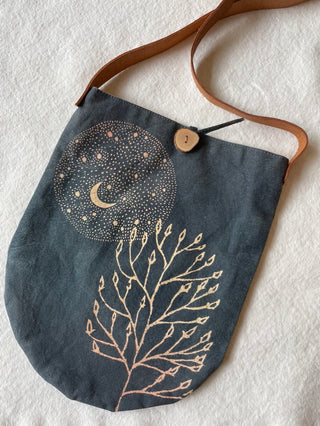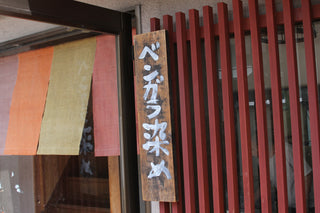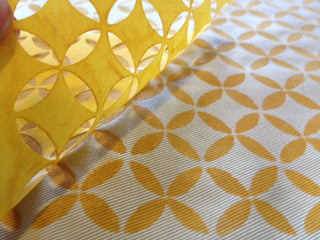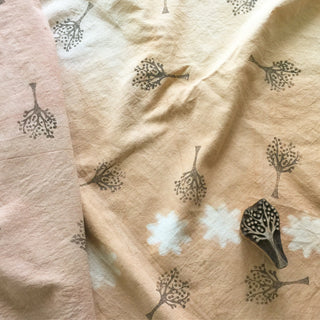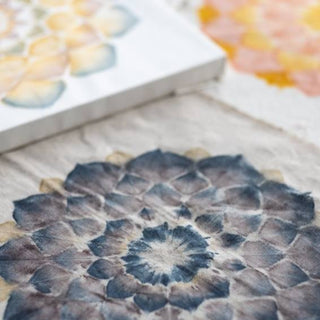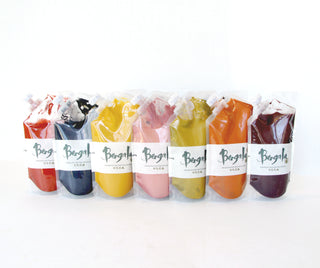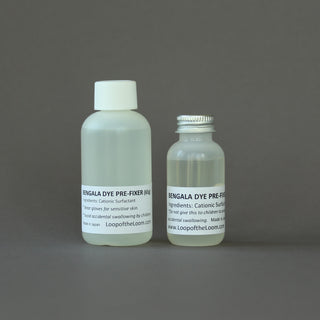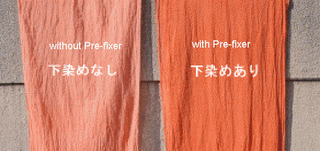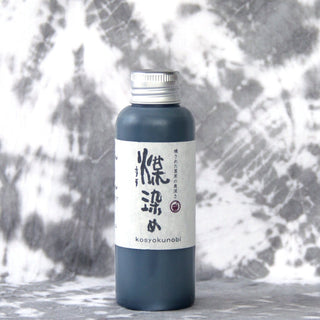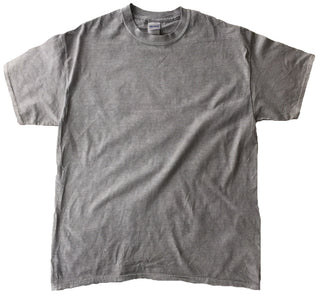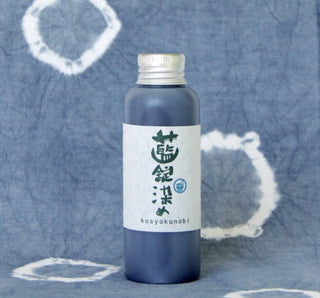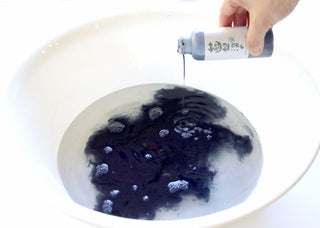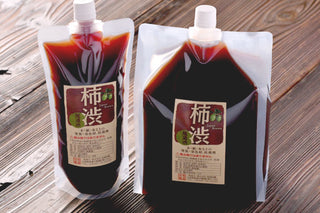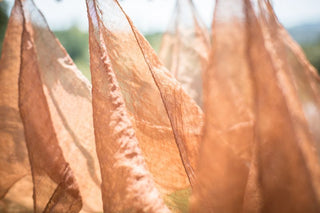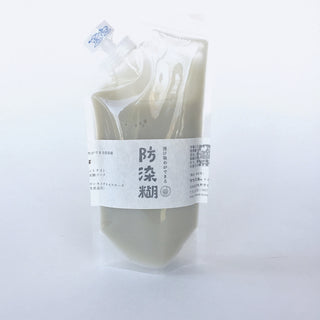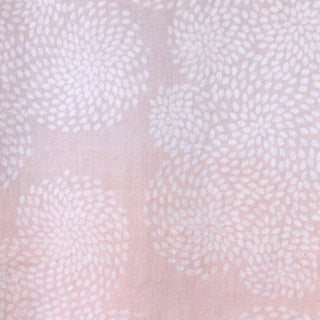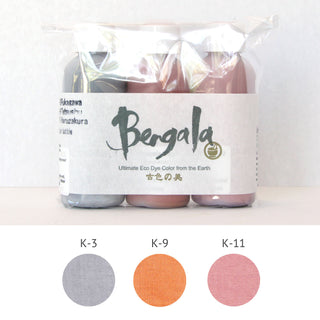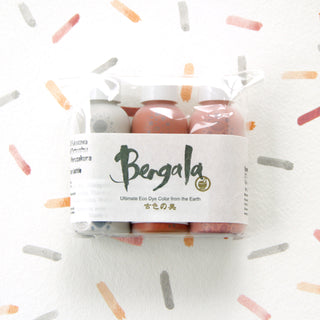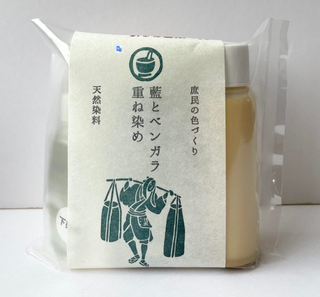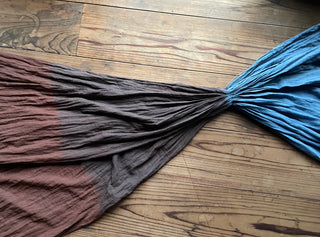Bengala is a mud dye made of natural minerals derived from the soil. Using traditional methods and modern technology, it brings us ancient colors as a new sustainable textile dye for fabrics, natural fibers, and paper. No toxic chemicals, no heat involved for Bengala dyeing.
Iron oxide pigment found in Paleolithic paintings estimated to be 20,000 years old in Lascaux Caves, France and Altamira Caves, Spain.
Color of the Earth
Bengala is made from iron oxide naturally found in soil. An ancient color made from the oldest pigments, it has been used since the Old Stone Age. It is said that the greatest quantity of red soil on earth is iron oxide. The name Bengala comes from the Bengal region in India-Bangladesh, where the process was found.
Environmentally Safe
You only need water. No heat or chemical substances are necessary. You will see that as you knead the fabric in the dye bath, the water starts to become clear because all of the pigments transfer from the water into the fabric. Left over dye solution can simply be drained back into the ground as part of the soil it came from.
Natural, Gentle Properties
The color is stable once the fabric is dried. It has gentle UV protection, and the color doesn't fade in the sun.
Bengala Color Chart

Guide to Bengala Dye Products
Here you can find PDF guides for each Bengala dye product. Click the links below to download instructions.
| How to Use Bengala Dye (PDF) |
How to Use a Pre-Fixer (PDF) |
How to Dye Wool (PDF) |
|
How to Use Aijozome Indigo (PDF) |
How to Use Susuzome Soot (PDF) |
|
|
How to Use Resist Paste (PDF) |
How to Use a Thickener (PDF) |
Guide to Bengala Dye (Video) |
About Bengala Dye
What makes Bengala dyeing special?
Bengala is a mud dye made of natural and sustainable material mined from the soil. Bengala dyeing is an ancient technique, used since the Old Stone Age. Iron (III) oxide, the pigment in Bengala mud dyes, is the same pigment used in the famous paintings in the Lascaux Caves in France and the Altamira Caves in Spain. Since Bengala mud dye is made from all natural ingredients, you can feel good about using it in your home and it can be safely discarded in your garden. Bengala dyeing is a totally different method from plant dyeing and acid (chemical) dyeing. It is the bonding of mineral pigment to the fiber. As the color comes from mineral particles, the Bengala dyes also have UV protection--the color won’t fade in the sun!

What material can I dye?
Bengala mud dyes work on most fabrics, including cotton, linen, hemp, silk, wool, rayon, polyester, and fiber blends. Unlike many other kinds of plant dyeing methods, it is even possible to
dye synthetic fibers such as polyester with Bengala if the pre-fixer is also used. Please see “Dyeing process” below for more information about specific fibers. Fabrics made without fibers, such as vinyl, are not suitable for Bengala dyeing.

Who is the manufacturer of Bengala Dye?
Loop of the Loom is proud to offer Bengala products as an authorized dealer of Kosyokunobi since 2012.
A manufacturer of Bengala products, Nakajima Co. was established in 1965 in Japan as a producer of Bengala paints for temples, shrines, and wooden dwellings. For a long time, the natural Bengala stains were a mainstay for Japanese wooden buildings because of their superior characteristics of protection against termites and harmful UV rays. As housing styles have modernized in Japan, the cultural use of Bengala for painting homes has decreased as people have chosen petroleum-based paints instead. Our new global movement towards more natural ways of life is turning back to traditional wisdom and more eco-friendly choices.
In 1991, Kosyokunobi was launched as a new division of Nakajima Co. for textile dye. Through extensive research and development, Kosyokunobi succeeded in producing various natural colors only from soil. The philosophy of Kosyokunobi is to revive ancient techniques to promote environmentally-conscious, all-natural beauty, connecting us to the earth through material and color.

Kosyokunobi in Osaka, Japan
Safety
How safe are these mud dyes?
Kosyokunobi, a textile dye division of Nakajima Co., the manufacturer of Bengala product, sent us the Material Safety Data Sheet (MSDS), and it proved that the materials are safe and do not contain lead or cadmium. Kosyokunobi has been producing the natural dyes and paints for four generations and developing safe living with natural clothing and houses using Bengala. It is safe to use Bengala dyes on textiles for babies, and it is safe and fun to use these dyes together with your family. People with extremely sensitive skin may want to wear gloves while using Bengala dyes, and be mindful while wearing Bengala-dyed textiles.
GOTS (Global Organic Textile Standard) certified Bengala-dyed cotton yarns produced by Taishoboseki Industries, Ltd in 2015.
As a small, family-run business, Kosyokunobi has not pursued expensive certifications or testing. We believe, based on our extensive experience with these dyes, that Bengala dyes are very safe. However, please be cautious and use your best judgment when using this product.
One of the ingredients of Bengala dye is hypoallergenic natural rubber latex (see the package). Latex is a sap naturally produced by plants, and this natural latex is non-toxic. The latex used in Bengala dyes has been processed to remove the allergen. Latex is optimal for fixing Bengala pigment to the fabric surface because Bengala is a large, irregularly-sized pigment, and the latex penetrates into the gaps and adheres the pigments to the fibers. The fabric remains soft and the latex does not crystallize like synthetic rubbers.

About Pre-fixer
What's pre-fixer?
Pre-fixer is an ionizing agent that helps bond the Bengala pigments securely to the fiber. Our pre-fixer is a non-toxic cationic surfactant, which is the same raw material used for hair conditioner, air purifier, and fabric softener. The pre-fixer is an ammonium salt, which carries steady positive ions formed by the reaction of ammonia and acid.
How does pre-fixer work?
Bengala dyeing uses ionic reactions to adhere the mineral (Iron III oxide) pigment particles to textiles. Like a magnet, the positively-charged ions of the pre-fixer attract the negatively-charged ions of the Bengala dye.
This pre-fixer does not work without water (H2O). Water serves as a mediator between + (positive ion) and – (negative ion) and makes them friends! It is only possible under the water. Water is important and indispensable for dyeing.

Do I need pre-fixer?
We recommend using pre-fixer before Bengala dyeing all fibers except wool*.
The colors of your fabric will be more vibrant and longer lasting if you use pre-fixer, and patterns created with shibori (tie-dye) techniques will be clearer if the fabric is treated with the pre-fixer. Bengala can dye almost anything, even synthetic material, by using the pre-fixer. Especially for items like clothing, which will be washed repeatedly and withstand wear-and-tear, we definitely recommend using pre-fixer, which will allow your beautiful dyework to last longer.
For items that will not be washed frequently, it is less important to use pre-fixer. For items like starched canvas and reusable shopping bags, we have found that the pre-fixer will change the texture of the fabric, and if these items will not be washed regularly, you may skip the pre-fixer.
The pre-fixer is a completely non-toxic, man-made salt. If you prefer to use 100% natural ingredients, please read "How to dye the 100% natural way".
*If you plan to dye wool, we recommend using alum water instead to prevent felting. Read our instructions for alum wool dyeing.

How do I use pre-fixer?
Please see our Pre-fixer instruction sheet for more information and tips. If you have sensitive skin, we recommend that you wear gloves.
-
-
-
Weigh your fabric.
-
Mix the pre-fixer solution: Use 10 times the weight of the fabric in water and 3% the weight of the fabric in pre-fixer. Mix well. (For example, if your fabric weighs 100 grams, you will use 1 kg of water and 3 grams of pre-fixer.)
-
Add damp fabric to pre-fixer solution.
-
Knead and stir the fabric for 1-2 minutes in the pre-fixer solution.
-
Remove the fabric and wring out well.
-
Rinse the fabric twice in clean water.
-
Wring out the fabric well.
-
-
You can dye the fabric immediately after following these steps, or you can allow the treated fabric to dry and dye with Bengala at a later date. Be sure to wet the fabric before dyeing.
Dyeing Process
| Instructions (PDF) | Tutorial (video) | Itajime shibori (video) |
How much dye do I need?
For easy reference, one 65 ml bottle of Bengala dye is sufficient for an adult-sized t-shirt (approximately 100 grams), and a 200 ml bottle of Bengala can dye approximately five t-shirts (approximately 500 grams). It is difficult to give an exact measurement of how much dye you will need, because each fabric will absorb a different amount of dye depending on its structure and fiber content. Fabrics like wool, corduroy, and jersey cotton will absorb more dye, and fabrics made from fibers that are smoother, like silk and synthetics, will not bond with the dye as readily, and so less dye will be used. Additionally, if you are seeking a lighter shade, you will not need to use as much dye.
How to use Bengala dye
Please see our instruction sheet for more tips and details. Pre-treat your fabric with a pre-fixer for optimal results. (Please see How to use pre-fixer and How to dye wool for instructions on pre-treating). Fabric should be damp before dyeing.
-
-
-
In a bucket, pour in just enough water to cover your fabric.
-
Shake the Bengala dye bottle well before using, as the pigment particles will sink to the bottom. Start by adding ½ - 1 tablespoon dye solution to the water and mix thoroughly.
-
Add damp fabric to the dye solution and knead the fabric evenly for 3-5 minutes or until the shade you want is achieved. (Note: Like all fabrics, it will appear a few shades darker when wet, and it will dry lighter.) If the water is becoming clear, you can add more dye. For delicate materials, like wool and silk, press the fabric gently instead of kneading.
-
Remove fabric from the dye vat and roll in a towel to absorb excess moisture. Dry in the sun, or use a tumble dryer, iron, or hair dryer to dry indoors. Do NOT rinse before drying completely.
-
-
How to dye the 100% natural way
Gojiru: Gojiru (soybean extract) treatment is a technique often used for plant dyeing. It uses the liquid residue from boiled soybeans, which is a protein, to pre-fix the fabric and help the fabric absorb the pigments. In ancient times, Gojiru treatment was also used for Bengala dyeing as a pre-fixer. It is not an ideal method because it takes a lot of time and effort to prepare the soybean extract, such as steaming and squeezing the beans, and the dyed fabric treated with Gojiru requires one year of rest to set the color.
Alum Water: Using alum water to pre-treat your fabric is easier than using Gojiru, and the best way to pre-treat wool products to prevent felting. Fabrics treated with alum water are still lighter in tone than those treated with pre-fixer. Do not add too much alum solution in the dye bath. The excessive density of alum induces a bond between the pigments, not on the fabric. To make alum water, mix water 10 times the weight of the fabric with alum, measuring 3% the weight of the fabric. For example, to treat 100 grams of fabric, use 1 kg of water and 3 grams of alum. Please see How to dye wool for step-by-step instructions. * Although potassium alum exists as a natural mineral, the forms commonly available are industrially synthesized in order to guarantee purity and stability.
How to dye wool
Mixing alum water with Bengala dye helps prevent felting by skipping the extra steps of rinsing and kneading in the pre-fixer process. Alum works like a pre-fixer to help the color stick to the wool fabric or yarn more easily.
Note: Superwash wool, which has been processed to remove the scales on the wool fiber to prevent felting and tangling, dyes better with pre-fixer. The smoother fiber of superwash wool is harder for Bengala dyes to stick to, and as it won’t felt, we recommend pre-fixer.
Weigh the material (fabric, raw wool, yarn) you are going to dye. Put tap water that is 10 times the weight of the fabric in a bucket. Measure alum to be 3% of the solution. (For example, if you are dyeing 100 grams of fabric, you will use 1 kg of water and 3 grams of alum.) Add alum to water and mix well. Pour the amount of dye you would like and mix well. Soak the material in the dye bath and knead it lightly.
Note: Excessive kneading causes felting.
The dye solution becomes clear as the wool absorbs the dye and alum mixture. If you would like a deeper color, for best results, we recommend making a new dye bath with fresh alum water to add more dye to your wool. Squeeze the dyed fiber lightly and then wrap it in a towel to remove excess water. Dry the fiber well. Do not rinse before drying completely. Fiber can be washed after it is thoroughly dried.
Note: Alum water makes it easy to dye by promoting ionization.
Excessive use causes the pigments to adhere to each other, preventing good dyeing results. Please use the proper amount.

Can I dye leather?
Yes, Bengala dyes work on leather. Be aware that the finished surface of the leather becomes matte and sandy, not shiny. You do not need to use a pre-fixer on leather.
How can I customize my own Bengala colors?
Bengala is like watercolors. You can mix the colors as you like. If you would like a lighter shade, start with a small amount of dye in the water. You can add color anytime.
Bengala dyes can be mixed in the same dye vat, or the colors can be overdyed/layered in different dye vats.
You can also make blue shades by adding Aijozome Indigo to a Bengala dye solution. To make pastel shades, you can mix with K-2 Gohun (a white color from natural titanium dioxide).

Can I try tie-dye?
Yes! We recommend using a pre-fixer for the tie-dye technique because it improves the contrast between the dyed and resisted areas of the fabric. Bengala dyeing is not a soak dye or dip dye. You have to knead the fabric in the dye bath until it reaches your desired color.

Can I dye my clothes with Aijozome Indigo?
Yes! The color of Aijozome is not as deep as dark indigo blue. It's a medium shade, and it can be mixed with Bengala dyes to achieve more colors. Always pre-wash and pre-fix your fabric. Follow the same procedure as with Bengala dyes. Please see “How to use Bengala dye” for detailed instructions.

How much do I need Susuzome to dye a 1-yard cotton cloth to make it darker?
Starting with 1/3 of the bottle. When the pigments are adsorbed on the cloth, the pigments in the dye bath are decreased, and the color of the dyeing solution becomes lighter or transparent. Then, once take out the cloth and add the dye gradually. Repeat it if you want to make it darker. When the color of the dye bath no longer changes, the adsorption may be full. Even so, knead the cloth more in the dye bath a little longer, and the pigments will be further attached. Keep in mind that the color will become lighter after it dries. It cannot be blackened. According to the information from the manufacturer, 300 grams or two adult T-shirts can be dyed in one bottle. But it depends on the absorption and texture of the fabric.
How to store dye solution
Since the soot pigment is fine, you can over-dye again from the process of prefixer another day. If you want a darker color, try it. Leftover Bengala dye solution can be stored up to 5 days in the refrigerator. Opened dye bottles can be stored in a cool place for 1 year after opening.
Will I stain my hands?
Bengala may stain very pale skin, but will wash off after a day. Most people will not experience any staining on their skin. If you want to wash your hands after dyeing, just use mild soap. But remember, your clothing will be dyed if they are unprotected.
You can easily remove any Bengala stains on your bucket with the gentle application of dish soap. There is no need to scrub--the ions of the soap catch the Bengala pigment.
How can I draw directly on fabric?
Drawing with Bengala dyes on fabric is like watercolor painting. Use a brush, and dilute the dye with water for your desired tone. You can paint with Bengala on dry fabric, and if you would like to blur the color, you can wet the fabric partially while painting. Another fun technique is to paint the dye through stencils onto dry fabric. We recommend that you use pre-fixer when drawing on fabric with Bengala dyes. Please see “How to use pre-fixer” for detailed instructions. If you are planning on working on starched canvas or reuseable shopping bags, please be aware that the pre-fixer will alter the texture of the fabric. As these items are less likely to be washed, it is OK to skip using pre-fixer. For clothing, which will be washed repeatedly and withstand wear-and-tear, it is better to use the pre-fixer, as it will help the dye create a stronger, longer-lasting bond with the fabric. After you are finished painting your designs, make sure to allow the fabric to dry thoroughly in the sun or under an iron or hair dryer before rinsing.

How can I use stamps or stencil techniques?
Bengala is great for decorating fabric with stamps to create block prints or stencil with unique designs. Just pour the amount of dye you want to use into a palette. If you would like the dye mixture to be thicker, you can either wait and let it dry out a little, or you can mix in a thickening agent (read how to use Thickener). If you would like the dye to be thinner, you can mix in a little water. For a crisp line, we recommend that you print on dry fabric. We recommend that you use pre-fixer when stamping on fabric with Bengala dyes. After you are finished creating your designs, make sure to allow the fabric to dry thoroughly in the sun or under an iron or hair dryer before rinsing.
After-Dye Care and Washing
How should I treat the fabric after dyeing?
After dyeing, dry the fabric completely. You can dry in the sun, tumble dryer, or use an iron after hanging to dry if needed. Once dried, it’s ready to wear! If the color is dark, you can rinse before wearing to avoid any color rubbing off. Color on your skin will not stain and will come off with gentle soap and water.

Can I wash the dyed fabric? Will the dye bleed or fade?
Do not wash right after dyeing process. The dyed fabric must be completely dried first. After hanging dry, you may add ironing or tumbler drying to fully fix the color. Once the fabric is dried, you can rinse it before wearing. In this process, the excess color particles will rinse off, so you won't get any color on your skin. For the first few washes, wash separately from other clothing just in case excess dye rinses out, to avoid staining other garments. After the first few washes, you can wash it in the washing machine like any other item of clothing. As Bengala is a natural material, it's not as long-lasting as synthetic dye. But Bengala is much stronger and longer-lasting compared with other natural dyes. Bengala is also more light-fast than other dyes, as it has some UV protection.
Ordering Bengala
How can I purchase?
We are proud to sell Bengala dyes at Loop of the Loom. Find Bengala dyes linked directly at the bottom of this article, or view all Bengala Dyes.
What sizes and varieties of Bengala dye do you sell?
Our Bengala dyes are sold individually by color as well as in assorted three-packs. The individual colors are available in 65ml, 200 ml, and 1000 ml bottles. The assorted three-packs are three 65 ml bottles.
Our Aijozome Indigo dye, which can be mixed with Bengala dyes, is available in 100 ml bottles.
We recommend that you use pre-fixer with all your Bengala dye projects. Pre-fixer is available in 30 ml, 65 ml, and 500 ml sizes. You will need 3% of the total weight of your fabric.

Do you sell Bengala dyes wholesale?
To provide the best quality product, Kosyokunobi, the manufacturer, does not offer Bengala dyes in wholesale quantities.
Cloth of Time
Chronicle of craftsmanship with ancient dye from Japan
Cloth of Time
Chronicle of craftsmanship with ancient dye from Japan

